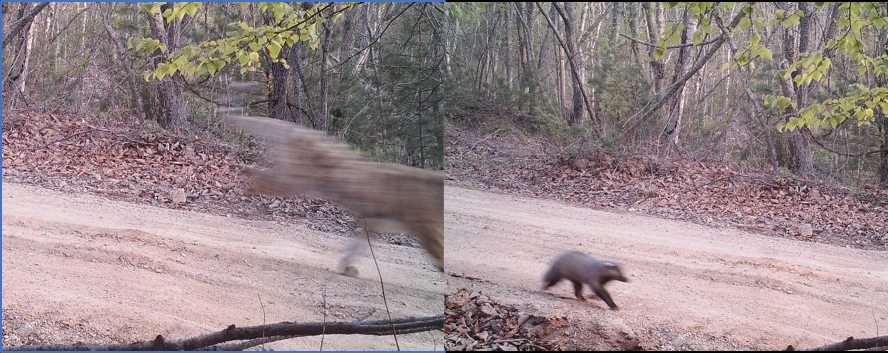Understanding wildlife disease and how it is passed between animals is crucial for any habitat, especially for the habitat of the endangered Amur tiger and the possible site of the reintroduction of the critically endangered Amur leopard.
This landscape is populated by a variety of different meso-carnivore species such as Asian badger (Meles leucurus), raccoon dog (Nyctereutes procyonoides), leopard cat (Prionailurus bengalensis), fox (Vulpes vulpes), Eurasian otter (Lutra lutra), several smaller mustelids, as well as domestic dog (Canis lupus familiaris) and domestic cat (Felis catus). These animals, because they typically occur at high densities, are thought to play a key role in the transmission of infectious diseases.
The ZSL veterinary team have been studying and sampling the wildlife in the Lazovsky State Nature Reserve to understand targeted infectious diseases and the densities of wild meso-carnivores density.

Two consecutive camera trap photos showing a young Amur tiger chasing a badger in a hunting attempt. Badgers are often eaten by tigers; a behaviour that may be important for the spread of diseases.

